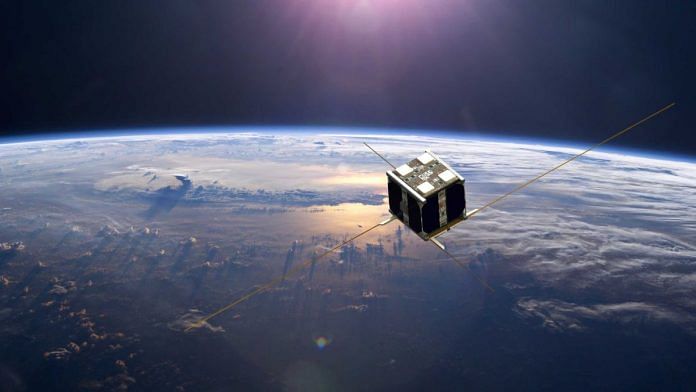Hyderabad: Software engineer Ronak Samantray wants to change the way Earth looks from outer space.
“Satellites have just been about putting eyes for surveillance or a mouth for communication. But what if we put a brain in space?” said the founder of Hyderabad-based startup, TakeMe2Space.
Now, his startup is ready to launch India’s first thinking ‘data compute’ satellite on ISRO’s SSLV (Small Satellite Launch Vehicle) by September. A little over a year old, TakeMe2Space is the newest kid on the startup block. But it’s already creating a stir in India’s space tech ecosystem by asking questions about what satellites can do. Its AI-inference model allows satellites to not just collect data but also make sense of it while in space.
From environmental monitoring to agricultural tracking, the implications could be huge both for commercial industries and India’s private space sector. Inferences could range from the extent of damage caused by an oil spill in the ocean to the density and health of crops in a field.
“The goal is to make space accessible for any researcher, student, educator, or startup that wants it,” Samantray said. Most companies charge clients based on the area covered by satellites, with rates ranging from $15 to $30 per square kilometre. TakeMe2Space plans to upend this model by charging based on time—as little as $2 per minute. The startup already has a waitlist of 40 clients for its first satellite.
“The idea is excellent because satellite accessibility is definitely the need of the hour,” said Srimathy Kesan, founder and CEO of Space Kidz India, a Chennai-based aerospace startup that involves students, especially girls, in satellite building.
“But alongside this innovation, they also need to raise awareness among actual students and researchers, to ensure their product is actually accessed by the people,” Kesan added.
TakeMe2Space started taking shape in 2022 when Samantray wanted a satellite to launch some code he was working on. When he realised how difficult it was to access satellites in India, he decided to build one himself. He had no hardware experience or even ties with ISRO, unlike many startup founders who are alumni of the Indian space agency. But that didn’t stop him.
Now, his intelligent satellite is nearing completion, and Samantray is looking ahead. His 10-year plan is to eventually build data centres in space and join the ranks of global space-tech companies. What still seems a lofty plan to some is a concrete goal for him.
“India is at the cusp of breakthroughs in the space sector, with new startups coming in with new ideas. It is really exciting to see their visions,” Kesan said. “I am also looking forward to seeing how they manage the challenges of innovation, affordability, and accessibility in their model.”
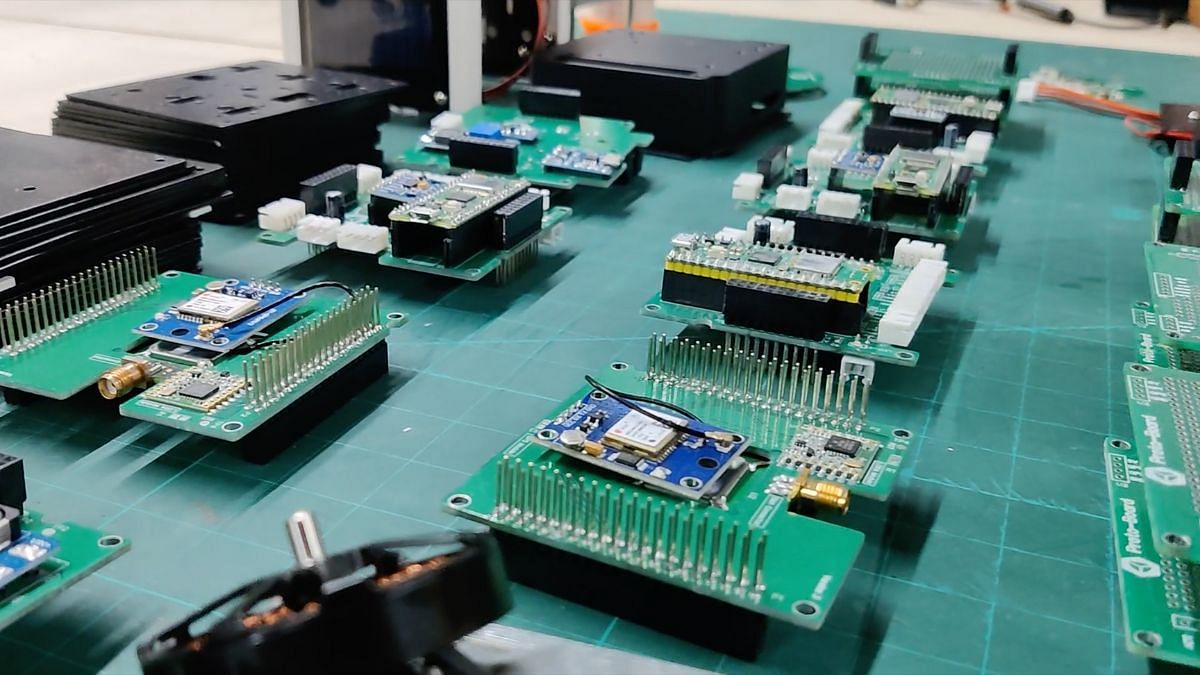
Gearing up for the ISRO launch
TakeMe2Space’s vast office space in IIIT Hyderabad’s Centre for Innovation and Entrepreneurship thrums with activity. It is an engineer’s workshop, fit for a company that says it is building a satellite from scratch—on a tight deadline.
Ahead of their ISRO launch, the team of 21 employees—most in their early 20s and 30s—are adding the final touches on their model. At one end of the office, an engineer is fine-tuning an algorithm to make the solar panels on the satellite self-rotating.
“Most small satellites have either a Sun-pointing mode to charge solar panels, or an Earth-pointing mode to click images. We want to do both at the same time, so we’ve built a system to control solar panels independently,” said Sharath Reddy, head of products at TakeMe2Space.
At the other end of the office, another engineer is working on how to protect the entire satellite, and especially the processor, from the Sun’s radiation. At the centre of the room, Samantray and Anand Rajagopalan, the head of Business Strategy, sometimes take meetings with investors, trying to secure funding for their future missions. In keeping with the organisation’s open and egalitarian vibe, the room has no sections or cubicles—everyone from the intern to the founder sits in the same space.
“Our goal is to make this AI-inference satellite accessible and cheap, which means we must have the cost of the satellite in our control. We can’t be dependent on others for important components,” said Rajagopalan.
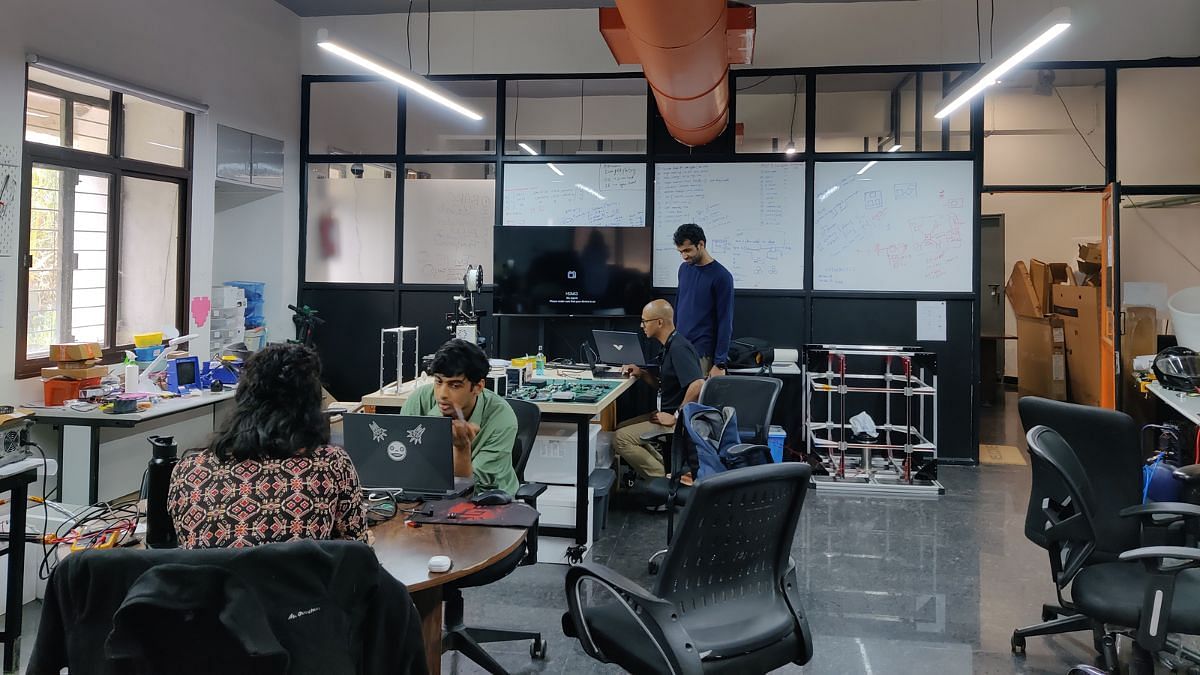
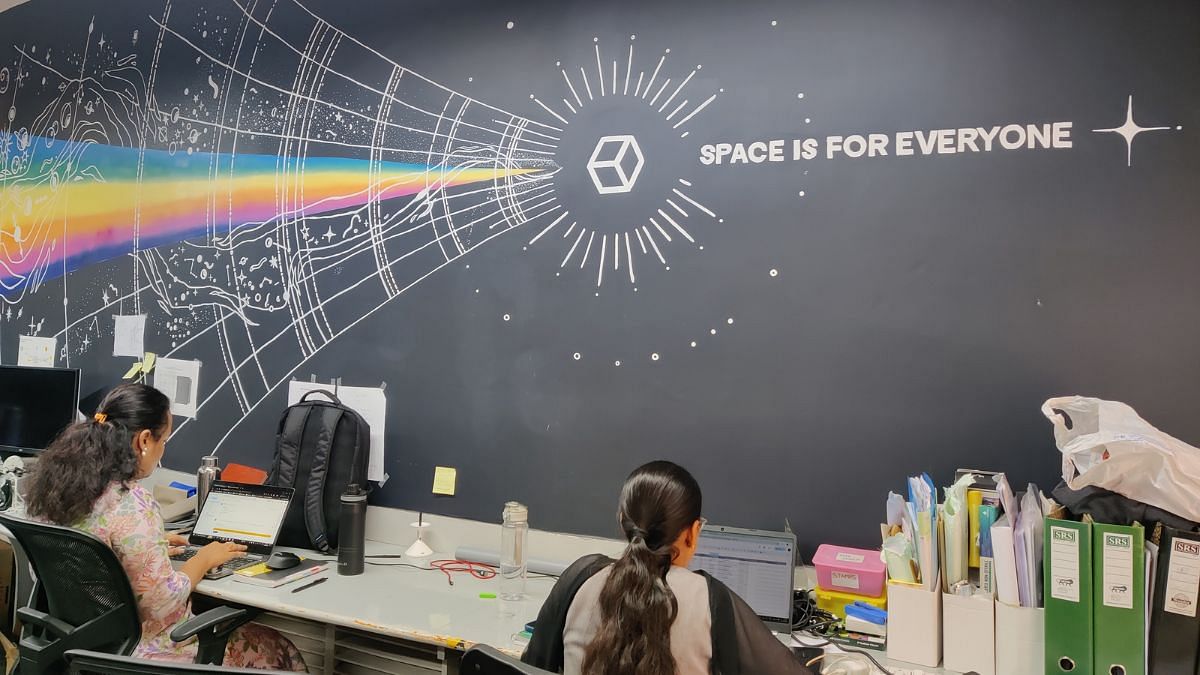
The team is building a solar-powered satellite that has both a camera for collecting data and a processor to infer the data. Instead of heavy, raw, unprocessed images, the satellite will be able to beam back to Earth the exact information required by the consumer. This is much more complex than how most imaging satellites currently work, since they capture heavy images and transfer that data back to the Earth, to be then processed by customers themselves.
“We’re trying to cut costs at every level, so we’re using off-the-shelf materials to build our satellite. But everything needs to also work in space, with different temperatures and different radiation exposure,” said Reddy, walking through the office. “We’ve developed a Tantalum-based coating technology which shields our components, especially integrated circuits, from the space radiation.”
If successful, companies will no longer need to buy petabytes (equal to 1 million GB) of images at high costs and do the processing themselves on land. By inferring the data in space, TakeMe2Space plans to reduce the data size to megabytes. The challenge is reducing the cost of transmitting all that data back to Earth.
Imagine there’s a college student somewhere who has developed a machine learning algorithm to monitor forest fires and alert authorities from space. Who is going to give him access to a satellite to test his model? These are the people who will come to us.
Ronak Samantray, founder, TakeMe2Space
Most satellite companies charge based on per square kilometre of imagery, with costs differing based on the resolution of the image. The price, according to LandInfo Worldwide Mapping, can be $10-$20 per sq km for archive (older) images and $15-$35 per sq km for new ones. For ultra-high resolution images, the cost can even be $50-$60 per sq km.
These prices are just for raw satellite images, and not the processed data that TakeMe2Space says it will provide for just $2-$4 per orbital minute. Given that it takes 90 minutes to complete one Low Earth Orbit (an orbit from a distance of 160 km to 2,000 km), a company could get one orbital period’s worth of data for as low as $360.
By leasing out satellite space in terms of minutes, TakeMe2Space also wants to appeal to a larger base of consumers who might have previously not thought of using satellite data for their industry. For the most part, the data is used in the defence and maritime sectors. But the startup is eyeing industries like FMCG and agriculture companies, along with researchers and even students.
“Imagine there’s a college student somewhere who has developed a machine learning algorithm to monitor forest fires and alert authorities from space. Who is going to give him access to a satellite to test his model? These are the people who will come to us,” said Samantray.
Also read: Two India-Pakistan surgeons built a medical journal. It’s become an ugly separation battle now
How it started
Back in 2022, Ronak Samantray was fresh out of his last founder gig in a software startup. Ready to get his hands on something ‘disruptive’, he chose space technology.
As a coder, he wanted to see if there was a way for him to develop a software model that could be launched into space using a satellite. But he soon found out that satellites weren’t available on rent to just about anyone.
“That’s when he walked into T-Works and told us that he wanted to build one,” recalled Rajagopalan, who at the time was working at the prototyping lab set up by the Telangana government in Hyderabad’s financial district.
“At T-Works back then, we had helped build everything from electric vehicles to drones, but never a satellite. We were excited by the prospect and the team rose to the challenge,” Rajagopalan added.
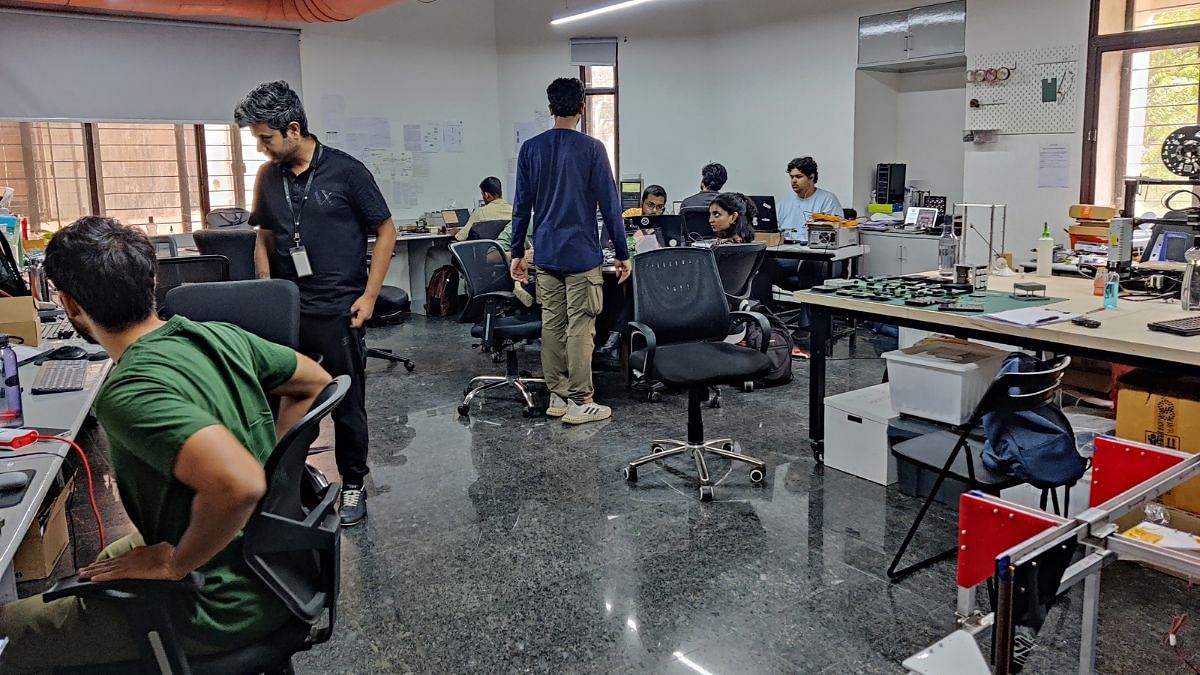
Thus began TakeMe2Space, ideating and building in the Telangana government prototyping lab. Their first few months were about figuring out the engineering basics of satellites, and what they were capable of. After helping build two separate payloads for TakeMe2Space’s satellite while still at T-Works, Rajagopalan, Sharath Reddy, and Firoz Ahammed eventually left T-Works to join Samantray full-time at the startup.
“I’d say, initially, we didn’t have any ISRO experts or advisors out of choice, because we didn’t want to be biased by their experience,” Reddy said. “There’s so much to learn from them, obviously, but at the same time, we wanted to try and fail ourselves.”
But Rajagopalan reiterated that their company would not be where it is today if it weren’t for the systems ISRO and the Indian government had put in place. After their initial prototyping, TakeMe2Space carried out their entire testing of the payload at the IN-SPACe Technical Centre in Ahmedabad.
“Now, as we are building our satellite to be launched on SSLV, we have three former ISRO members as consultants. We’re so glad we went through the first few stages largely by ourselves because now we can talk to them in their language,” Rajagopalan said.
Also read: Jio’s man in Estonia is bringing a basement revolution—for young girls in STEM
Data centres in space
In 10 years, the team plans to build data centres in space. And it is banking on the Sun’s unlimited energy to power them.
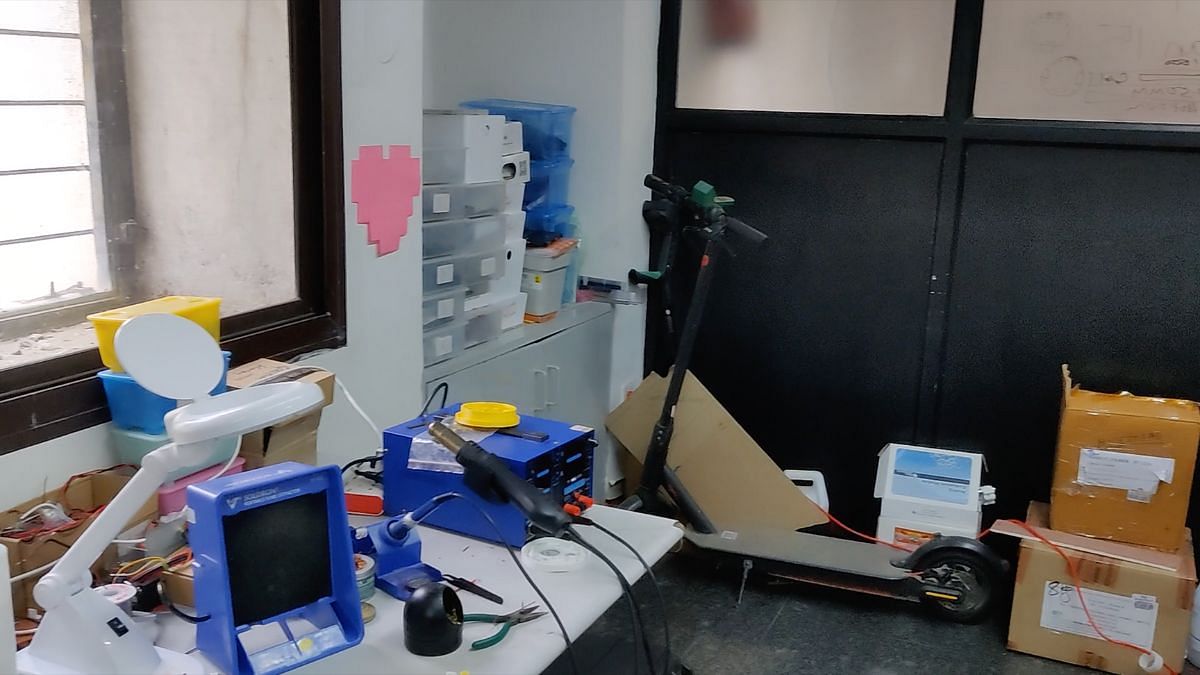
The reasons Rajagopalan and Samantray provide for shifting computing to space are environmental. The energy and emissions required by large data centres are simply not viable on Earth in the long run, they argue.
According to the International Energy Agency (IEA), data centres globally are responsible for 1.5 per cent of the world’s total energy consumption. In five years, this figure will be at 3 per cent, and in the US, data centres already account for over 4 per cent of annual energy consumption.
The rise of AI has increased the deployment and need for data centres massively, and a McKinsey report estimates that demand for data centres will rise by around 20 per cent a year until 2030.
Even within India, data centre expansion has started, with TakeMe2Space’s home city, Hyderabad, leading the race. According to a March 2025 Anarock Capital report, out of the 440 acres of land acquired to develop data centres across the country, 69 per cent is in Hyderabad alone.
“Very soon, though, we’ll run out of both land and energy on Earth,” Samantray said. “This is where space comes in as a potential new environment.”
The energy available in space is virtually unlimited and free because of the Sun. “And if you can manage your thermal management well—which is a non-trivial challenge—then you don’t even need energy to cool the systems because the environment in space can help you with that,” Rajagopalan said.
Compute is the new space race, and sooner or later it will literally be fought in space. We just want to make sure India is ahead of the curve.
Ronak Samantray
The hurdle against putting data centres up in space is the cost of launch, according to Samantray. But even those challenges are being tackled, with the cost for a rocket launch to Low Earth Orbit falling from $65,000 per kg in the 1980s to $1,500 per kg in 2018.
“These costs can go down to as much as $600 per kg with the likes of Starship and Indian companies like EtherealX,” Samantray said with excitement. “This opens a whole host of opportunities for what can be done in space.”
Even as Elon Musk’s SpaceX is innovating how to lower rocket costs in its California-based headquarters, Samantray’s TakeMe2Space is innovating how to utilise these costs for their satellite launches years into the future. The space economy is only just beginning to open up.
The engineering model of MOI-TD is ready with all systems integrated.
MOI-TD – tech demonstration of 'AI-lab in space's, in making. 3 out of 6 is stacked up. Next few weeks are going to be crucial to the system as a whole up. Launching on PSLV POEM-4. #space #AI #india pic.twitter.com/xFCkkRct7e
— TakeMe2Space (@tm2space) June 2, 2024
The AI-inference satellites that TakeMe2Space is developing are a stepping stone for their ultimate plan of launching a data centre in space—a large unit with the ability to process millions of units of data. These centres can be used for virtually any application that uses the internet, from Instagram to ChatGPT to Google Maps. NVIDIA’s growth into the world’s most valuable company, as well as the US-China tussle for critical minerals—essential to build the semiconductors used in data processing—all point to one thing.
“Compute is the new space race, and sooner or later it will literally be fought in space,” Samantray said. “We just want to make sure India is ahead of the curve.”
But for this dream to actually take shape, they will need to deploy at least 5,000 satellites in space.
Pasted on the door of TakeMe2Space’s office in IIIT Hyderabad is a faded piece of paper with Rudyard Kipling’s famous poem, If, written on it. Two lines in the poem read:
“If you can meet with Triumph and Disaster
And treat those two impostors just the same”
The lines, promising success to those with perseverance, resonate with everyone on the team.
“What we’re doing is inherently risky, with a high chance of failure. The poem is a reminder that we should have it in us to start from scratch,” Rajagopalan said.
(Edited by Prasanna Bachchhav)


